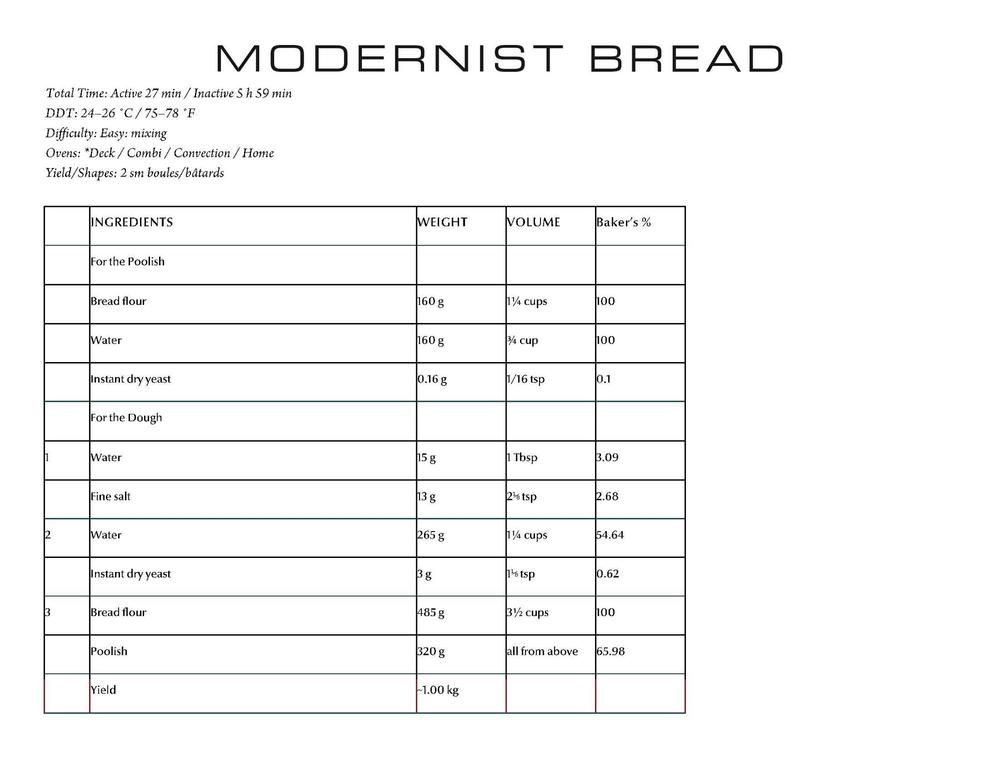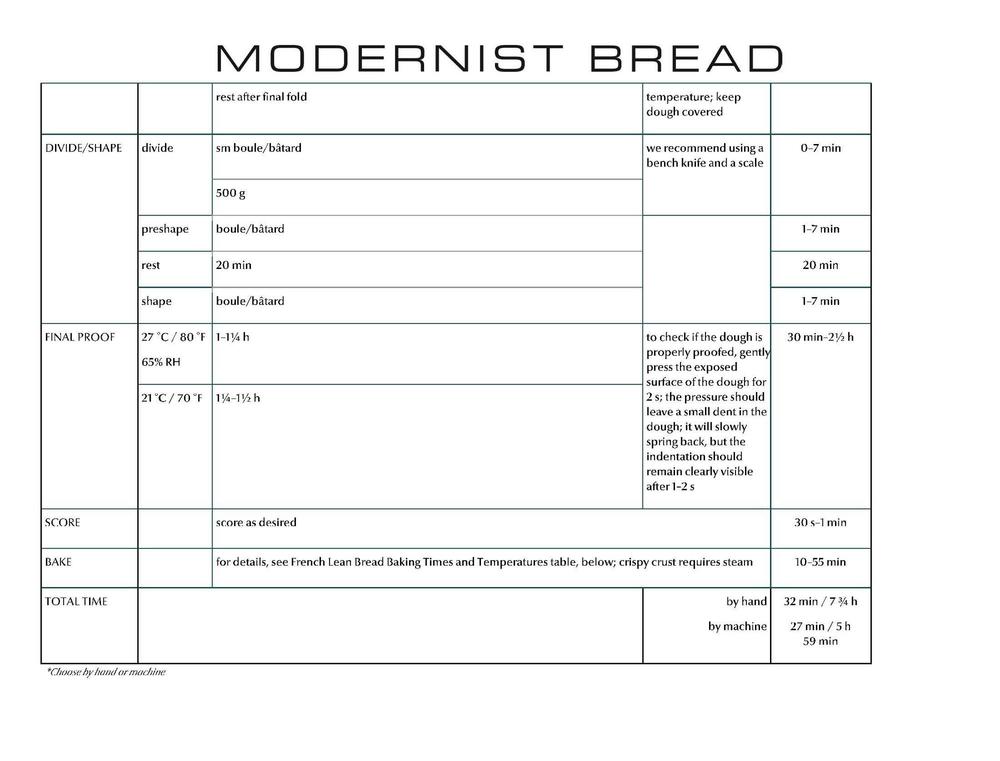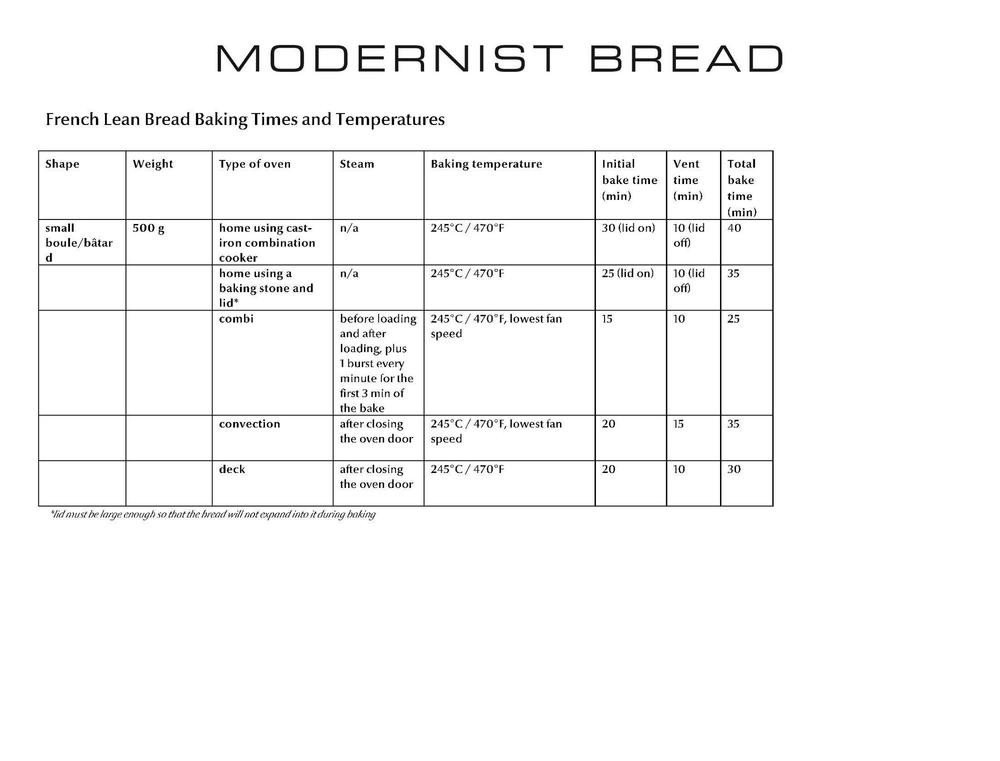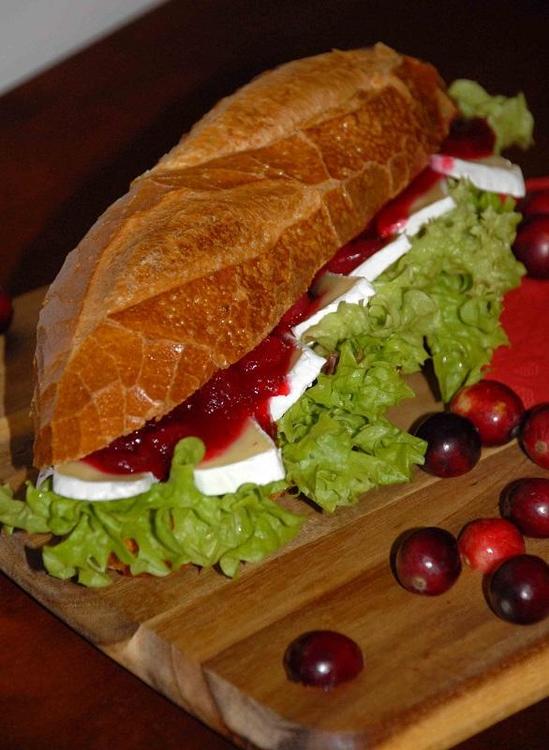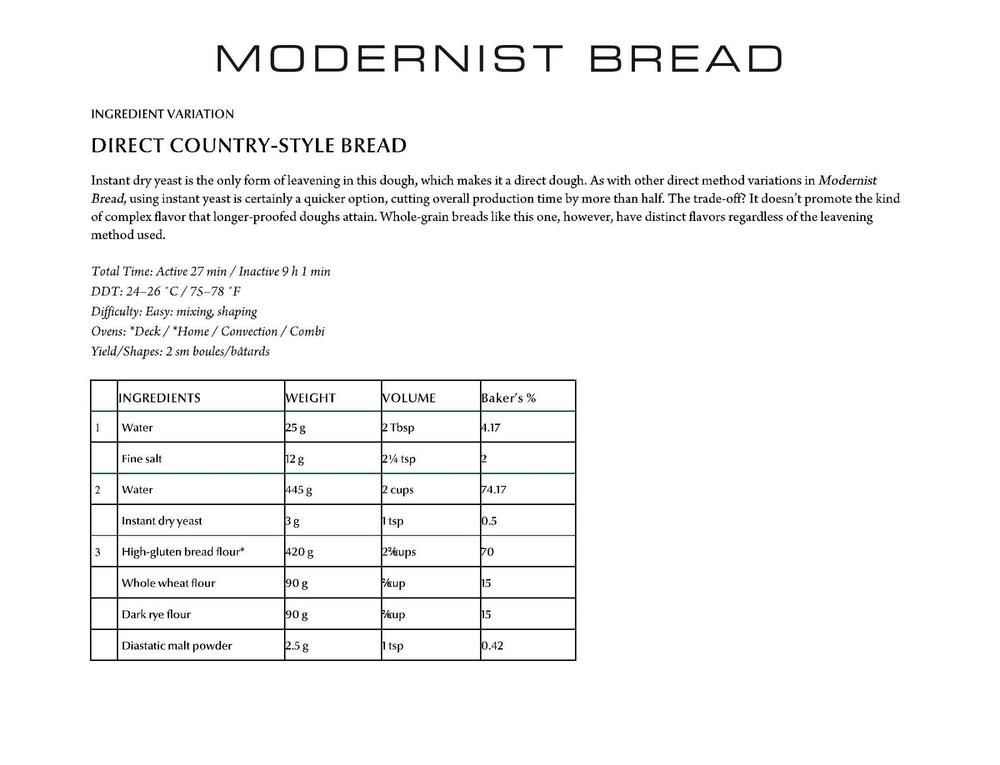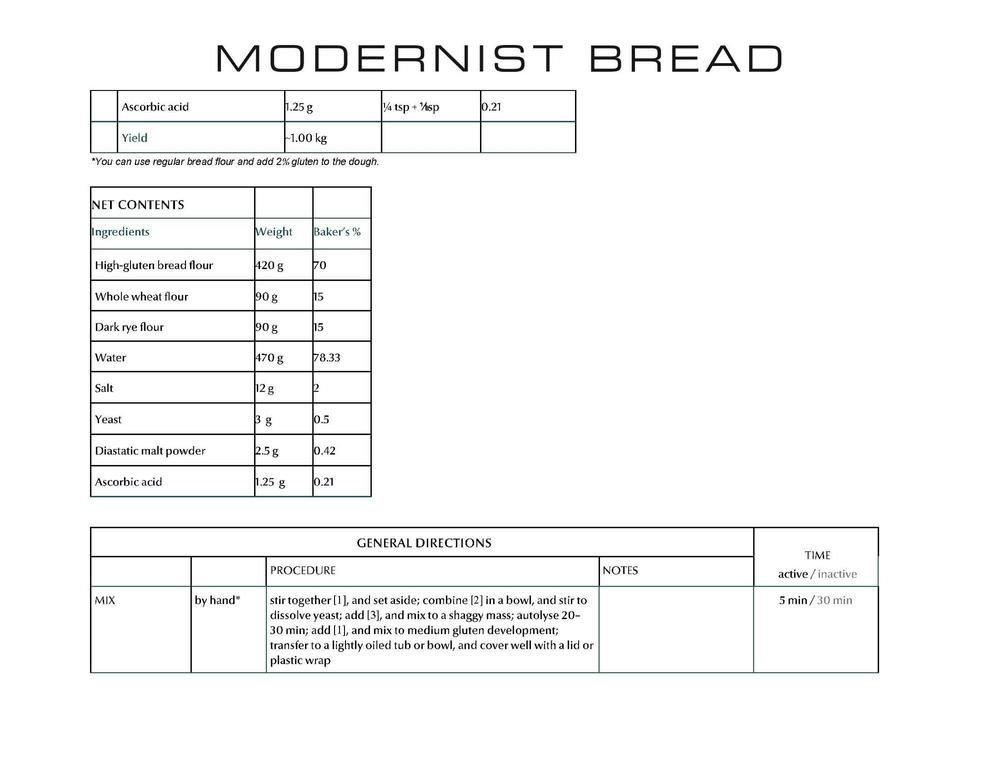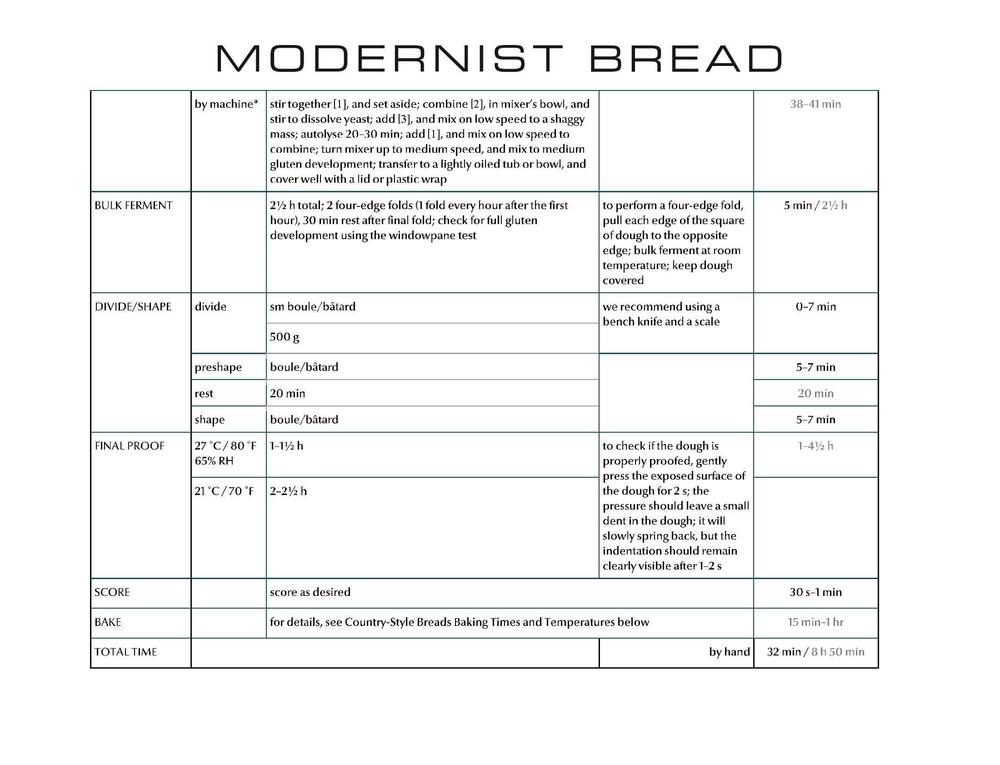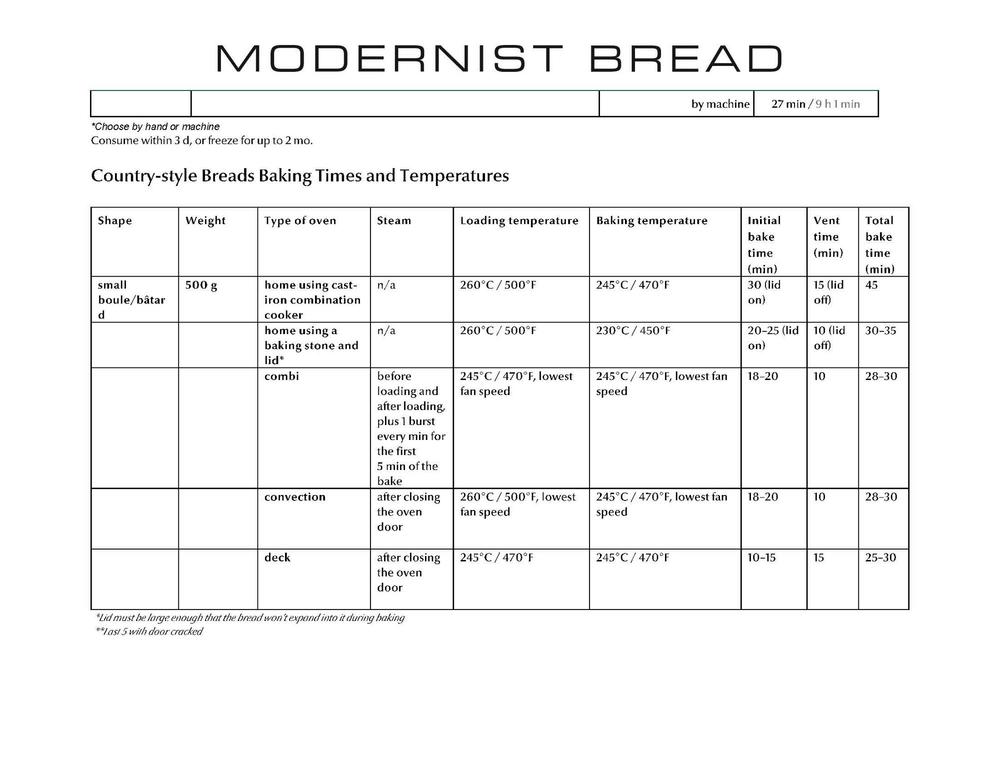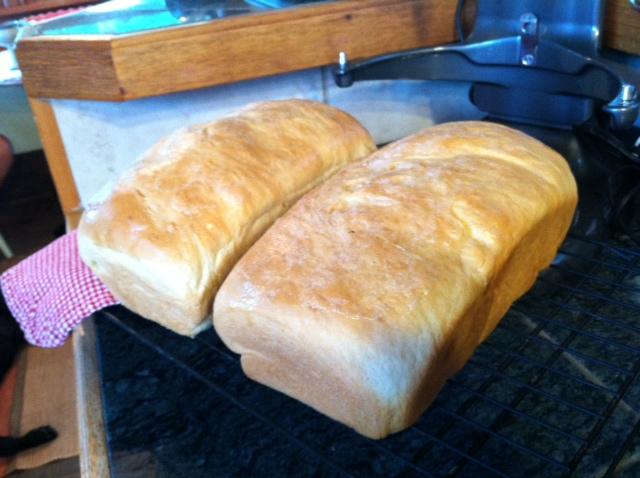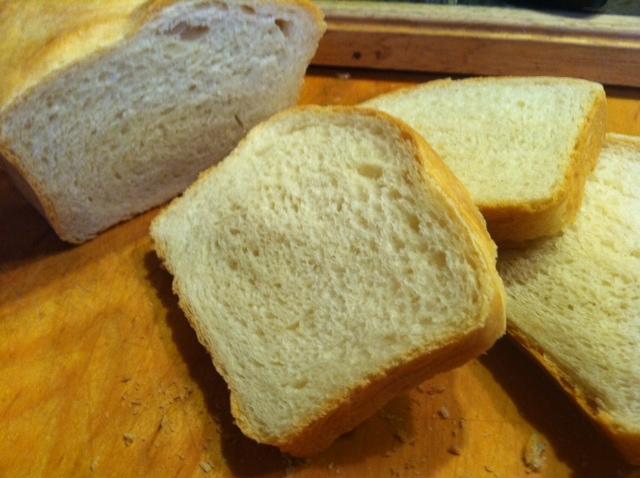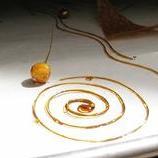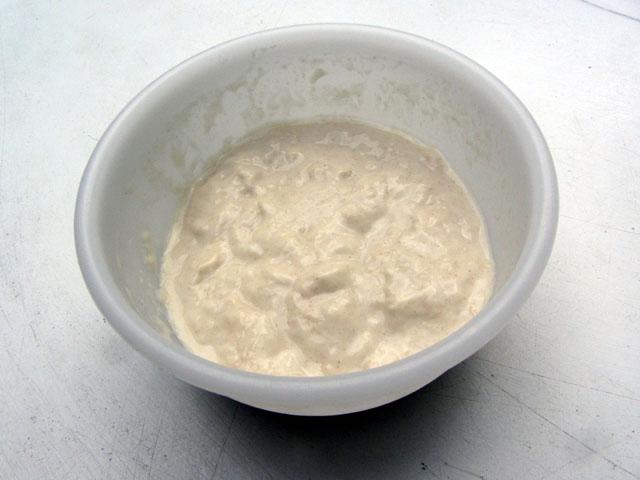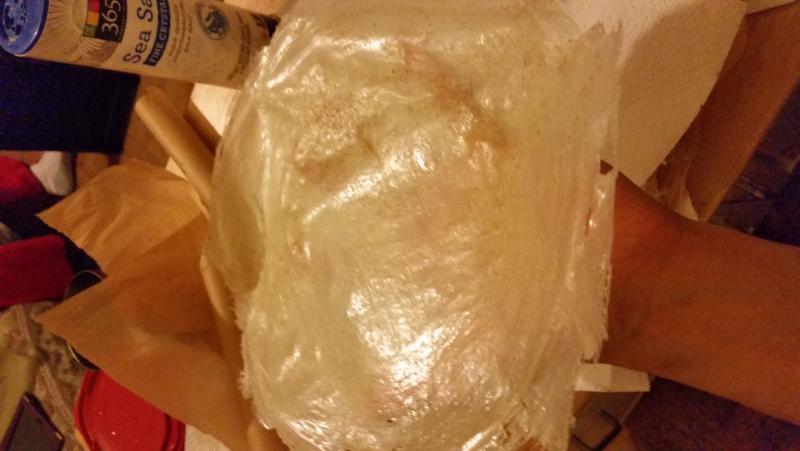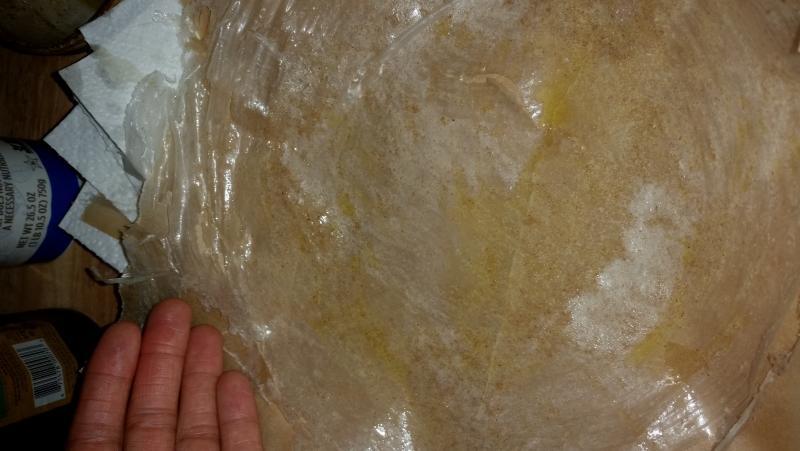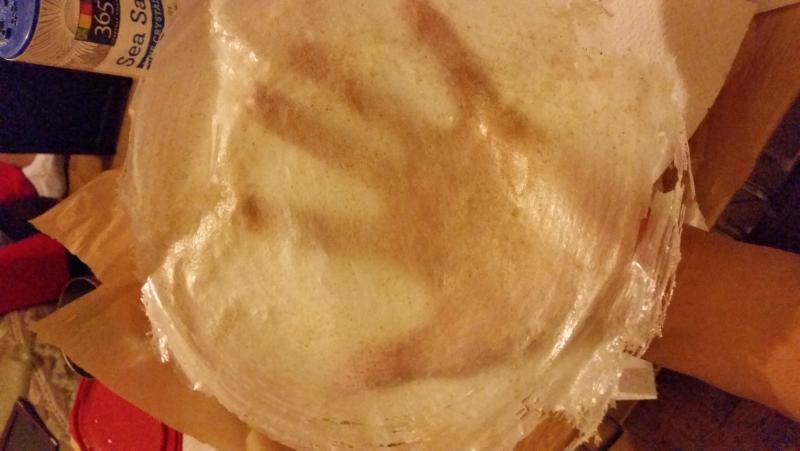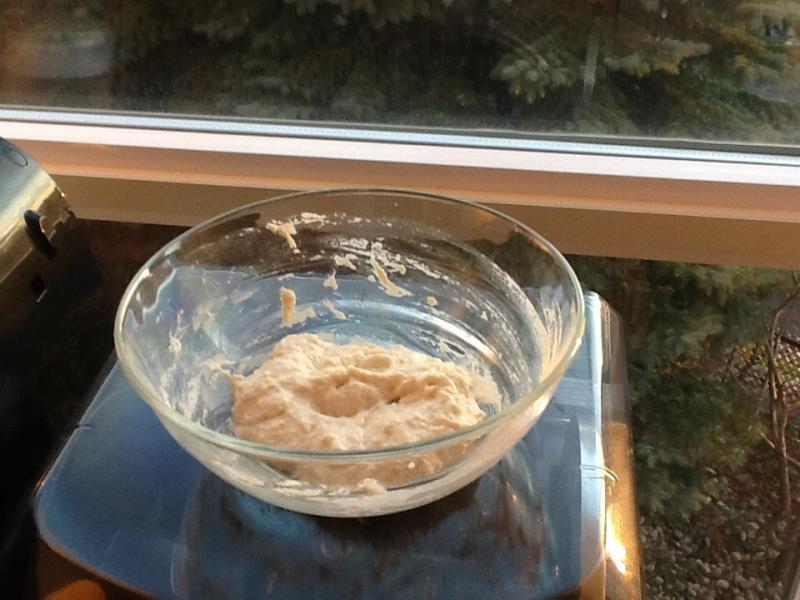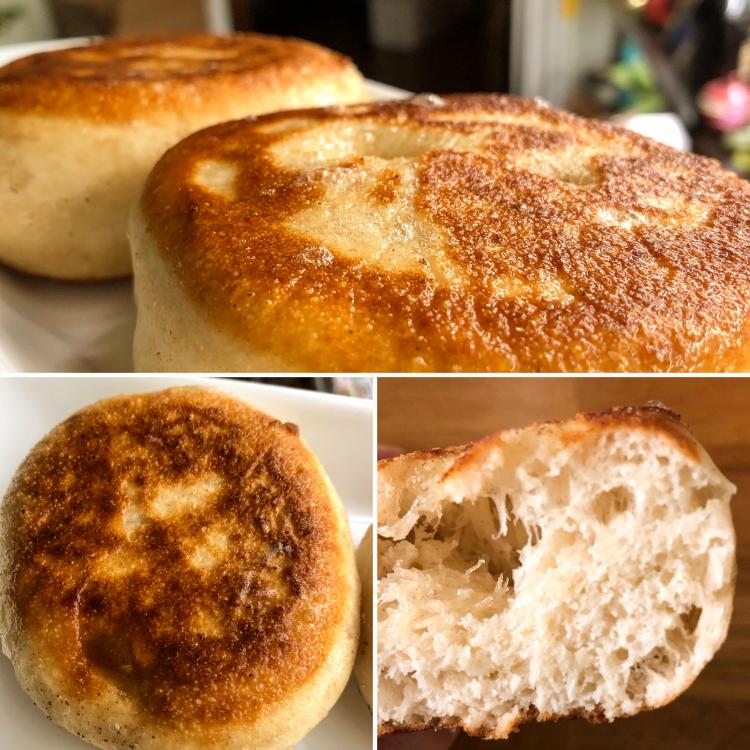Search the Community
Showing results for tags 'Bread'.
-
Does anyone know if using a high-protein flour, rather than AP flour, in a quickbread formula could create a gummy texture as a result of the protein slightly developing as it absorbs water? I was attempting to reduce water activity in the formula by using flour with 14% protein rather than 8-10% protein. Am I out in left field on this one?
- 2 replies
-
- Bread
- Troubleshooting
-
(and 1 more)
Tagged with:
-
On Nov. 7, 2017, Modernist Bread will finally arrive on my doorstep. Having preordered it literally the first day it was available, to say I'm excited about this book is a bit of an understatement. The team at The Cooking Lab have been gracious enough to give @Dave the Cook and me early electronic access to the book and so I've spent the last week pouring over it. I'm just going to start with a few initial comments here (it's 2600 pages long, so a full review is going to take some time, and require a bunch of baking!). Dave and I would also be happy to answer any questions you've got. One of the main things I've noticed about this book is a change in tone from the original Modernist Cuisine. It comes across as less "everything you know is wrong" and more "eighty bazillion other bakers have contributed to this knowledge and here's our synthesis of it." I don't think it's an exaggeration to say that Myhrvold and company are now the most experienced bread-bakers in the world. Not necessarily in terms of the number of identical loaves they've produced, but in the shear number of different recipes and techniques they've tried and the care with which they've analyzed the results. These volumes are a distillation of 100,000 years of human breadmaking experience, topped off with a dose of the Modernist ethos of taking what we know to the next level. The recipes include weight, volume, and baker's percentages, and almost all of them can be made by both a home baker and someone baking in a commercial facility. The home baker might need to compromise on shape (e.g. you can't fit a full-length baguette in most home ovens) but the book provides clear instructions for both the amateur and professional. The recipes are almost entirely concentrated in volumes 4 and 5, with very few in the other volumes (in contrast to Modernist Cuisine, where there were many recipes scattered throughout). I can't wait for the physical volumes to arrive so that I can have multiple volumes open at once, the recipes cross-reference techniques taught earlier quite frequently.
- 171 replies
-
- 11
-

-
Not sure if the subject line really reflects the situation and my question. Sweetie made a couple of loaves of soda bread the other day, and cut the top of the loaf in order to make a pattern something like THIS. However, the pattern or cut mark didn't show on the finished loaf. I don't know much more other than she said she made the cut "pretty deep." What might be the cause of the cut mark not showing on the finished loaf? Thanks!
-
Next week marks the official release of the highly-anticipated Modernist Bread by Nathan Myhrvold and Francisco Migoya. The eGullet Society for Culinary Arts & Letters is excited to provide you with the opportunity to win a copy of the book. The Cooking Lab has provided us with a couple of other prizes that will go to a second and third winner: second place will win an autographed poster and calendar, and third place will receive an autographed poster. They are also providing an autographed bookplate for the first place winner's copy of Modernist Bread. The rules are simple: we are going to post recipes from the book that the team at The Cooking Lab has graciously provided for this purpose. To enter into the contest, you need to bake one or more of these recipes and post about them in the official contest topics by the end of November 2017. Winners will be drawn at random from those posting pictures and descriptions of their completed loaves. Complete rules and other details can be found here. For our first recipe, we're starting with a cornerstone recipe from the book: French Lean Bread. I've personally made this one and it's both delicious and completely approachable by anyone with an interest in this book. Courtesy of The Cooking Lab, here's that recipe (extracted from the book and reformatted for purposes of this contest): The recipes in this book tend to rely on information presented more extensively earlier in the books, so if anything isn't clear enough here please ask and Dave and I will do our best to answer your questions (we've had early digital access to the books for the last month or so). ETA: Here's what my first go at the recipe sounded like coming out of the oven...
-
A SANDWICH TO GO Today I would like to share with you the recipe for a snack which you can grab and eat "on the go". I know that it is unhealthy. We should celebrate eating and eat calmly and with deliberation. However, sometimes the day is too short for everything on our schedule and we still have to eat. Admittedly, we can sin and go for some fast food, but it is healthier and tastier to prepare something quickly in our own kitchen. Today, Camembert cheese and cranberries in a fresh, crunchy roll take the lead role. It sounds easy and yummy, doesn't it? Try it and get on with your day . Today I used a homemade cranberry preserve which was left over from dessert, but if you like you can buy your own. Ingredients: 2 fresh rolls (your favourite ones) 150g of camembert cheese 1 handful of lettuce 2 teaspoons of butter 2 teaspoons of pine nuts or sunflower seedspreserve 100g of fresh cranberries 3 tablespoons of brown sugar 100ml of apple juice Wash the cranberries. Put the cranberries, sugar and apple juice into a pan with a heavy bottom and boil with the lid on for 10-12 minutes, stirring from time to time. Try it and if necessary add some sugar. Leave to cool down. Cut the rolls in half and spread with the butter. Put some lettuce on one half of the roll. Slice the camembert cheese and arrange it on the lettuce. Put a fair portion of the cranberry preserve on top of the cheese. Sprinkle with the roast pine nuts or sunflower seeds and cover with the second half of the roll. Enjoy your meal!
-
Is there a discussion in the book about the purpose of adding ascorbic acid? I just saw the contest #2 in which the recipe called for it. I'm curious because a woman I know on the internet used to work in a bakery in Vietnam, and said that to get similar results to the banh mi there, you need to add ascorbic acid. Does it act as a gluten relaxer? Traditional banh mi have a very tender and crisp crust, and a very light and tender, relatively closed crumb.
-
Modernist Bread is out now, but maybe you haven't taken the plunge. Here's your chance to win your own copy, courtesy of the eGullet Society for Culinary Arts & Letters. The Cooking Lab has provided us with a couple of other prizes that will go to a second and third winner: second place will win an autographed poster and calendar, and third place will receive an autographed poster. They are also providing an autographed bookplate for the first place winner's copy of Modernist Bread. The rules are simple: we are going to post recipes from the book that the team at The Cooking Lab has graciously provided for this purpose. To enter into the contest, you need to bake one or more of these recipes and post about them in the official contest topics by the end of November 2017. Winners will be drawn at random from those posting pictures and descriptions of their completed loaves. Complete rules and other details can be found here. For part two, we're featuring another cornerstone recipe from the book: Direct Country-Style Bread. The only leavener here is instant yeast, so production time is considerably shortened. The relative lack of flavor compared to long-proofed doughs is offset by the use of whole grains. Courtesy of The Cooking Lab, here's that recipe (extracted from the book and reformatted for purposes of this contest):
-
I was cooking for a party last night at which a gluten free cake was served for dessert. I had a few bites and aside from the cake being dry and the frosting very sweet, there was that tell-tale grittiness that GF baked goods seem to have. This particular bakery uses a blend of millet, sorghum, tapioca and potato flours. I used some Bob's Red Mill GF flour to satisfy a customer request for GF shortbread and found the same grittiness - they use garbanzo bean flour, potato starch, whole grain white sorghum flour, tapioca flour and fava bean flour. Obviously some sacrifices of flavor and texture are made when trying to replicate the magic of gluten, but why can't these flour blends be softer? Can't they be milled more finely? Or is it just the way the particular starches or proteins in those other flours are felt on the tongue? It's like that chalky cold cooked rice texture, do you know what I mean? Why can't it be better? Almost every time I eat something made with substitute flours, it makes me sad and want to fix it.
- 14 replies
-
- 2
-

-
Blueberry Buckle, Banana Bread, Banana Coffee Bread, Boston Brown Bread and Prune Nut Bread. Cornbread, Corn Fritters and Corn Spoon Bread. Ginger Muffins, Hawaiian Muffins and Swedish Timbale Cases. All these recipes come from my cherished 1968 edition of the Better Homes and Gardens "New Cook Book." But the popularity of "quick breads" hasn’t faded over the decades. By definition, quick breads are basically breads that are leavened with baking soda or baking powder rather than yeast. And "quick" breads eliminate the need for waiting hours for the yeast in traditional doughs to rise. The Holidays are the perfect time for quick breads. Quick breads are economical and all the well-known ingredients of the holiday kitchen work quite well in quick breads: dates, raisins, pumpkin, cranberries, candied fruits, nuts, citrus fruits, eggnog and a boozy nog too. The Holidays are fast approaching, so join in the celebration as we launch our newest Bake-Off, eG Bake-Off XX: Holiday Quick Breads. See our complete Bake-Off Index here: https://forums.egullet.org/topic/155586-bake-off-index/
-
Every year I like to grab a baking cookbook or two for the house baker/my wife. What are some of the best options out there for 2013? Any eagerly anticipated gems arriving for the end-of-year blitz?
-
Host's note: this topic is continued from The Bread Topic (2009 - 2014) I made white bread from from The Bread Baker's Apprentice by Peter Reinhart. I used variation #1. Best white bread I've ever made.
-
Hello All, What is the best way to store sandwich bread, made following Rose Beranbaum's recipe? Storage time no more than 7 days. Thanks in advance, Nelson87
-
So excited that our Seattle Seahawks are in the Super Bowl this year! What are people making? Any Seahawk fans planning a Seattle-inspired menu? One that doesn't involve any last minute cooking? I'm making sourdough bread and bacon/onion jam to go with someone's beef tenderloin. To bring in some Seattle touches, we'll have smoked salmon, a Northwest berry cobbler. And as a nod to Seahawk colors: blue corn chips and guacamole. There'll be IPAs of course (Seattle's a very hopped up city)but I'm also trying to come up with a clever cocktail - or hawktail (I've thought of making blue rock candy to use as a sugar rim on a sage margarita).
-
Looks like a fair number of us have been wooed by Ken Forkish's wonderful new book! The bread thread is full of his loaves lately. I thought the book needed a thread of it's own so we could discuss some of the finer points of the various recipes - work arounds we have come up with - and just to generally praise (and of course critique) the tome. I haven't had a failed loaf from the book so far - but I do find myself trying to make some adjustments to suit my schedule and have had great success with that so far. The levain takes 5 days to make - I was fortunate as Anna N made it and I just inherited 300 grams that I have been keeping alive since. I've discovered that feeding 50 grams of levain with half as much flour and water as called for gives me enough to work with on any given day and it doesn't seem to suffer. And it appeals to my thriftiness as I don't like throwing out large quantities each day. Today I'm working on 2 loaves of pain de campagne - a request from one of the nurses who got all misty eyed when she tasted the loaf I brought last week. She said it tasted just like the bread she likes at home in Europe. High praise indeed I thought. I fiddled this recipe a bit - again to fit my schedule. I mixed the ferment last night, gave it 4 turns over about 90 minutes then popped it into the fridge until this morning. I let it warm for an hour or so - shaped my loaves then let them sit until they responded to poking as they should. Took about 3 hours. They are baking now - and look just like they should.
-
The team over at Modernist Cuisine announced today that their next project will be an in-depth exploration of bread. I personally am very excited about this, I had been hoping their next project would be in the baking and pastry realm. Additionally, Francisco Migoya will be head chef and Peter Reinhart will assignments editor for this project which is expected to be a multi-volume affair.
-
Hello there, This is a tricky one, I promise! Injera is a flat bread mostly prepared in Ethiopia and Eritrea. It's a very spongy, but not rubbery, and it has a nice sour taste. Originally it is done with teff, which is a local crop in that region, and it has the property of not containing any gluten (this explains the lack of rubbery texture I suppose). It is prepared mixing teff flour (sometimes mixed with sorghum flour, to save on the precious teff) with water, forming a liquid but dense batter. Something similar to a pancake batter in terms of viscosity. No yeast is added, but it will be left to rest and ferment for something between 3 days and a week. After that some hot water is added one hour before the final step, which is cooking injera. The procedure is illustrated in this video: As a curious engineer, with an Eritrean mother, I've always been fascinated by this flat bread and I tried to replicate the results without using teff, but with no success so far. I manage to get the bubbles right (sometimes), but the texture of my injera is always very rubbery, no matter what kind of method I use to try to get rid of it (toasting the wheat flour before using it for the batter, or using an immersion blender on the batter). Any suggestion is most welcome!
-
There’s a persistent myth that good bread is the norm in France. It is a myth which is why I bring my starter with me when we come on holiday from Wales. I’m definitely becoming a grumpy old sod. I was so annoyed by a stupid article in The Guardian newspaper just before we came away a few days ago - http://www.theguardian.com/lifeandstyle/shortcuts/2014/sep/03/who-will-babysit-my-sourdough-starter - that I thought, for the first time in about 15 years I’m not even going to take my starter, I’ll start from scratch and if I can’t get a starter going, it’s store-bought bread for the duration. Anyway, the four days since we arrived here on Saturday have been so perfect that we are probably never going back home to Wales. So I thought I’d better have a go with the starter. Monday evening I mixed two tablespoons of flour (organic T65 from the supermarket) with enough water to make a stirable paste in a little plastic pot and covered it with a piece of kitchen towel. If you are going to try this, please note that little of the foregoing is relevant – the amount of flour, the type of flour, the fact that it’s French, the type of container, the cover. You just need to make a paste of flour and water and it will either start to ferment or it won’t. If it won’t, you start again. You only have to do this once in your life so the odd false start is not a big deal. This is how it looked after mixing on Monday evening – doesn’t tell you much but I thought you might feel reassured by its ordinariness. Watch this space. I’m going to look pretty stupid if this doesn’t work. Mick
- 61 replies
-
- 10
-

-
At my restaurant we make everything from scratch (even cheeses, cured meats, pickles...) except bread. Which is ironic since my start here on eG was primarily pastry and its still my passion. But I just haven't had the capacity to make bread for the restaurant until now.I bought a commercial convection, 2 tray full-sheet oven, and I think that will allow me the space to make enough to feed my customers. The bread is for my lunches only not dinners. Lunches are basic café fare - soup, salad and sandwiches. So obviously we're looking at the sandwiches. The bread needs to cross the lines between roasted turkey to sloppy chicken molé. I like my sandwich breads to be soft enough to easily bite and chew (sourdough is out). I would like the bread to be versatile enough that I could add herbs or cheese to specialize for various sandwiches. It needs to be sturdy but not so much bread in our carb conscious world. I like focacias but they're a bit too rustic for my place Previously I have used a bought ciabatta but they were too tough for many of my customers. Currently I am using a bought brioche bun which is too bready and so I'm seeing a lot come back to the trash. I've only used individual rolls/buns to this point but have considered sandwich bread, although that is a bit too rustic for us...but not if its good enough. I think the ideal bread would be somewhat flat but a bit of sponge, have a little bite, but not too much chew (if that even makes sense). Any thoughts. Maybe there's a cool ethnic bread that I haven't considered, or you have a favorite that seems to fit the bill.
-
Hello everyone, I made warqa dough for the first time today, following a recipe from Paula Wolfert's The Food of Morocco cookbook. It was surprisingly easy to make, however, i am concerned that this pastry is way too fragile to use. Im not sure if i did something wrong. The leaves are very delicate, especially around the edges. Some of them have rips in the centers. I brushed each with olive oil and layered them according to instructions and popped them into a bag. I was planning on making Paula's seafood bastilla in a couple of days but i think i might end up using filo dough. Has anyone made homemade warqa? Have you used it for any recipes such as bastilla? Is yours soft or crispyish? The leaves came out more like a spring roll consistency then a filoish consistency. Please help. Im curious of other peoples experience with this.
-
Host's note: this topic was split from the topic Baking Bread from Scratch in France. Allrighty then, I thought I would give this a go. This is what it looks like and I will cover this with a paper towel and see what happens. It is in a west facing window. Not sure what to do with it exactly if it works, but I will deal with that when (if) the time comes.
-
Requesting a little assistance. For several years, I’ve been baking bread by a variation of the covered pot method, where I start with the baking vessel at room temp rather than pre-heated. Instead, I do the final rise in the pot and, when ready, put that (covered) into a hot oven. I do it this way for several reasons. First, I live in a small studio apartment without a proper kitchen, so I need a method that will work in a countertop oven. Second, I find transferring proofed dough to a heated pot awkward and nerve wracking (fear of burns). Third, starting with a room temp baking vessel opens up lots of options as regards shapes and sizes, e.g., using a 1/3 steam table pan to make batards. Fourth, although not perfect, the method gives me pretty good results. The reason for this thread is that I’m in the process of updating my personal cookbook (not published, just something I distribute to family and friends) and would like to include this method in the bread chapter. My concern is that, while I assume it will work in a standard oven, I’ve never had a chance to test it; also, it occurs to me the timing might be different. I’d appreciate it if a couple folks (or three) would give it a test run and let me know. To be clear, I’m not trying to convert anyone to this approach. It’s a cheater method and I assume anyone willing to test it probably has a non-cheater one which works better for them. I’m just trying to confirm whether it works in a normal oven. Anyhoo, here are the details. Prepare whatever bread dough you generally use. For the sake of comparing results, it would be helpful if you work up a dough based on 1 lb (450 g) flour, thus producing a dough something like 1 lb 11 oz (760 g) raw weight and a finished loaf of about 1-1/2 lb (675 g). Prepare a baking vessel by oiling lightly, then dusting with rice flour (finely-milled semolina or cornmeal also may be used). My preferred baking vessel is a 3 qt All Clad cassoulet, but any similarly shaped saucier or “chef’s pan” would be just as good. Indeed almost any oven proof pot with a lid will work; it’s mostly for the shape of the baked boule that I prefer the rounded pot. After the first rise, shape dough into a ball, roll in bread or all purpose flour, place in pot, cover and give a second rise. Preheat oven to 450ºF/232ºC. Spritz dough thoroughly with water, slash with a razor or knife, cover and place in oven. After half an hour, reduce heat to 375ºF/191ºC, uncover pot and bake another half hour. Reduce oven to 325ºF/163ºC; remove bread from pot, transfer to a shallow baking pan with a rack and bake a final half hour. Let cool on a wire rack. Note: This is how I’ve written the instructions for the book, which assumes a conventional oven. For a countertop oven, I have to make several adjustments to shield the crust from overcooking. Whether I have correctly backed out those adjustments is one of the things I’m trying to confirm. Feel free, of course, to play with variations on this protocol to your heart’s content, but please do at least one trial as written, so we have a common basis of comparison. Many thanks to any who have the time and interest to give this a whirl.
-
Recently I watched a visit to an Entemann's bakery where they ran all the doughnuts under a UV light to kill mold spores before packaging. A few days later I was at Staples, where they had 'room sanitizing' UV lights on clearance and I'm thinking it couldn't hurt to get one and shine it on my bonbons before I cap them. Also to sanitize the kitchen in general, especially the walk-in fridge. Does anyone have experience with UV lights in a food production setting? Will the cheap one from the office supply store help me at all? thanks!
-
Ok, I don’t know how many of you are from around Cincinnati or Southern Ohio, but there’s a restaurant called Adriatico’s here that I’m a big fan of. It’s most well known dish is what is called “Sicilian crust” pizza. It’s basically a thicker crust, crunchy on the outside and soft inside. I asked them if I could have the recipe for it, but they said they don’t give out recipes. As such I need to know if anyone has a good recipe for this kind of thing? Any help would be appreciated.
-
i had a whole post typed up, but alas, it's been lost. i searched the forums but didn't find a thread dedicated to fried breads, thus. yesterday, i fried up some toutons to go with a beet soup. toutons are the popular newfoundland version of fried bread, historically made with bits of dough left overnight and fried in the morning with salt pork fat. like in the south, they were/are often served with molasses, butter, and/or beans. on the rock you'll find any number of restaurants serving them, some of which have a whole touton menu with various toppings or spreads. a lot of restaurants deep fry them instead of pan fry them out of ease of cookery, which has become a point of contention among many newfoundlanders. i had a bowl of leftover dough in the fridge from making khachapuris a couple of days ago, so i portioned out a couple of balls, patted them flat, let them proof for twenty minutes or so, and then pan-fried them in a mix of rice bran oil and butter. fried breads have a long history all over, often but not always as a sustenance food for cold weather climes. the navajo are known for their version of frybread from the 1800s, but it's commonly believed that first nations groups of north america also had their own forms of bannock made with local ingredients before it was re-imported from scotland. anyway i'd like to investigate fried breads more; post your own favourites and experiments here.
-
FYI. On todays Food Programme, BBC Radio 4 which will be podcasted I think tomorrow after its repeat. He outlined the Bread tome, and I found very interesting the economics of bread. It's all a bit beyond me as a Coeliac most of it is out of my reach. One can listen to it on Radio 4 website. Furthermore R4 is my constant companion and the last bastion of civilisation




